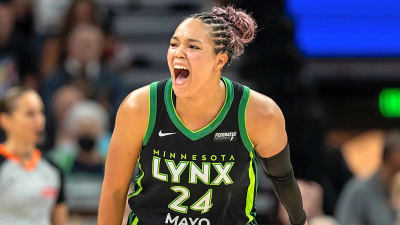
When it comes to mowing, both gas and electric mowers have their merits, but when it comes to a small yard, one power source shines brighter. While gas-powered mowers have long dominated the lawn mower market, electric models are making a strong case, especially for those with modest lawn space who love convenience. Knowing the key differences between these mower types will help you make an informed decision for your lawn's regular maintenance needs.
Gas vs. Electric Lawn Mowers
Gas-Powered Lawn Mower
- Power: Gas lawn mowers are known for their power output, which can handle unmaintained overgrown grass and uneven terrain with ease.
- Longer Runtime: Since they run on gasoline, these mowers aren’t limited by battery life, making them suitable for larger lawns.
- Durability: Due to their popularity, they are often seen as more rugged and built to last for years.
- Maintenance: Gas engines need regular tune-ups, oil changes, air filter cleaning, and refueling, making them more maintenance-heavy.
- Noise and Emissions: Gas mowers are notoriously loud and produce emissions during operation, contributing to air pollution and noise disturbance.
Electric Lawn Mowers
- Eco-Friendly: Battery-powered mowers produce zero emissions, which is a win for the environment.
- Low Maintenance: With no oil changes, spark plugs, or fuel to worry about, electric mowers require much less upkeep.
- Quieter Operation: Electric models operate at a fraction of the noise level of their gas counterparts.
- Easy to Start: A simple button or lever gets a battery powered-models going—no more pulling a cord repeatedly.
- Battery Life: Limited by battery runtime, but this is often more than enough for small yards. Having a replacement battery charged and ready stops disruptions to your chores.
Benefits of Electric Over Gas for Small Lawns
- Perfect for Small Spaces: One of the understate differences between gas and electric mowers is that the latter is ideal for modest yard size where a large machine is cumbersome.
- Cost-Effective in the Long Run: Though the initial price may be higher than some gas mowers, the ongoing costs exclude fuel, oil filters, and maintenance making electric models more budget-friendly over time.
- Quiet Enough for Any Time: Being about as loud as a washing machine, a battery-powered mower minimizes noise pollution so it won't disturb your neighbors even if you need to mow at odd hours.
- Eco-Conscious Choice: Choosing electric is the practical choice to help reduce your environmental footprint, by cutting harmful carbon emissions and contributing to cleaner air.
How long do electric lawn mower batteries last?
Battery life is one of the most common concerns when it comes to electric mowers, but for small to medium yards, it’s rarely an issue. Most modern battery mowers can run anywhere from 30 to 60 minutes per charge, which is generally more than enough for small lawns. Additionally, the recharge time typically ranges from 1 to 2 hours depending on the model and charger type. Some premium models even come with rapid chargers, so you can quickly top up if you need a bit more time to finish a larger yard.
Still want a riding mower?
For some homeowners, a "small yard" can feel subjective. Maybe you want the ease and comfort of sitting down while mowing, or perhaps you've got physical limitations that make a push mower difficult to manage. If that’s the case, you're not out of luck! Even in the world of electric mowers, there are riding options.
Take, for example, John Deere's lineup of electric riding mowers. They combines the robust power of a traditional riding mower with all low maintenance costs and the eco-friendly benefits of electric. This mower delivers up to 2 hours of runtime on a single charge, which is enough for an acre of grass. It's efficient operation, minimal noise output, and rechargeable battery, it's a popular choice for power and sustainability. For those who prefer riding, the initial cost of this electric option is quickly recouped by its efficiency and comfort.
More must-reads:
- Three keys for Yankees in winner-take-all Game 3 vs. Red Sox
- Fantasy football Week 5: Bo Nix among five players who could flop
- The 'Active multiple 140-receiving-yard games' quiz
Breaking News
Trending News
Customize Your Newsletter
 +
+
Get the latest news and rumors, customized to your favorite sports and teams. Emailed daily. Always free!








